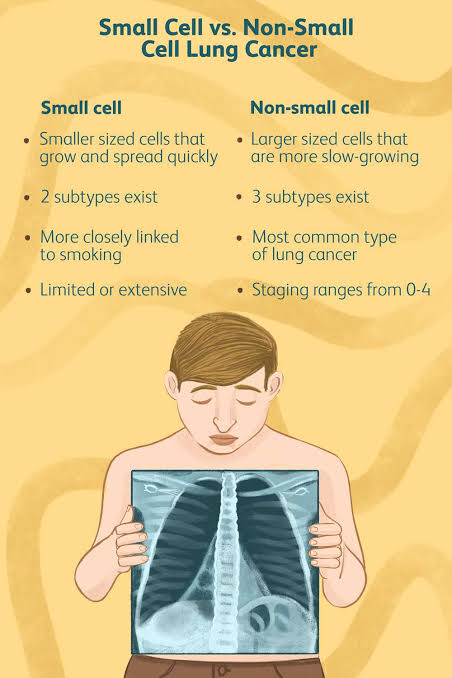Small cell lung cancer is considered distinct from other types of lung cancers, which are called non-small cell lung cancers, due to its clinical and biological characteristics. Small cell lung cancer exhibits an aggressive behavior, with rapid growth, rapid spread to distant sites, and response to chemotherapy and treatment. Radiation, and in most cases it is accompanied by paraneoplastic syndromes (symptoms and signs that include systemic effects that occur due to a change in the immune response and are not related to the spread of the tumor to distant sites in the body)
Paraneoplastic syndromes, and surgery has no role in treating it except in rare cases.
Disease generation
Small cell lung cancer, or oat cell carcinomas, arises in peribronchial locations and causes infiltrations in the bronchial submucosa.
Widespread metastases occur early in the course of the disease, and spread most commonly to the mediastinal lymph nodes, liver, bone, adrenal glands, and brain.
The production of many peptide hormones leads to the occurrence of a wide range of paraneoplastic syndromes, the most common of which are the syndrome of inappropriate secretion of antidiuretic hormone and the syndrome of production of ectopic adrenocorticotropic hormone.
Autoimmune phenomena may lead to several neurological syndromes, such as Lambert-Eaton syndrome.
Recent studies have indicated the activation or inactivation of the genetic tumor suppressor factor related to small cell lung cancer, and the extent to which changes in the genetic factor influence the development of small cell lung cancer is still an area of active research.
Smoking and exposure to radioactive radon cause mutations in the tumor suppressor gene associated with small cell lung cancer.

